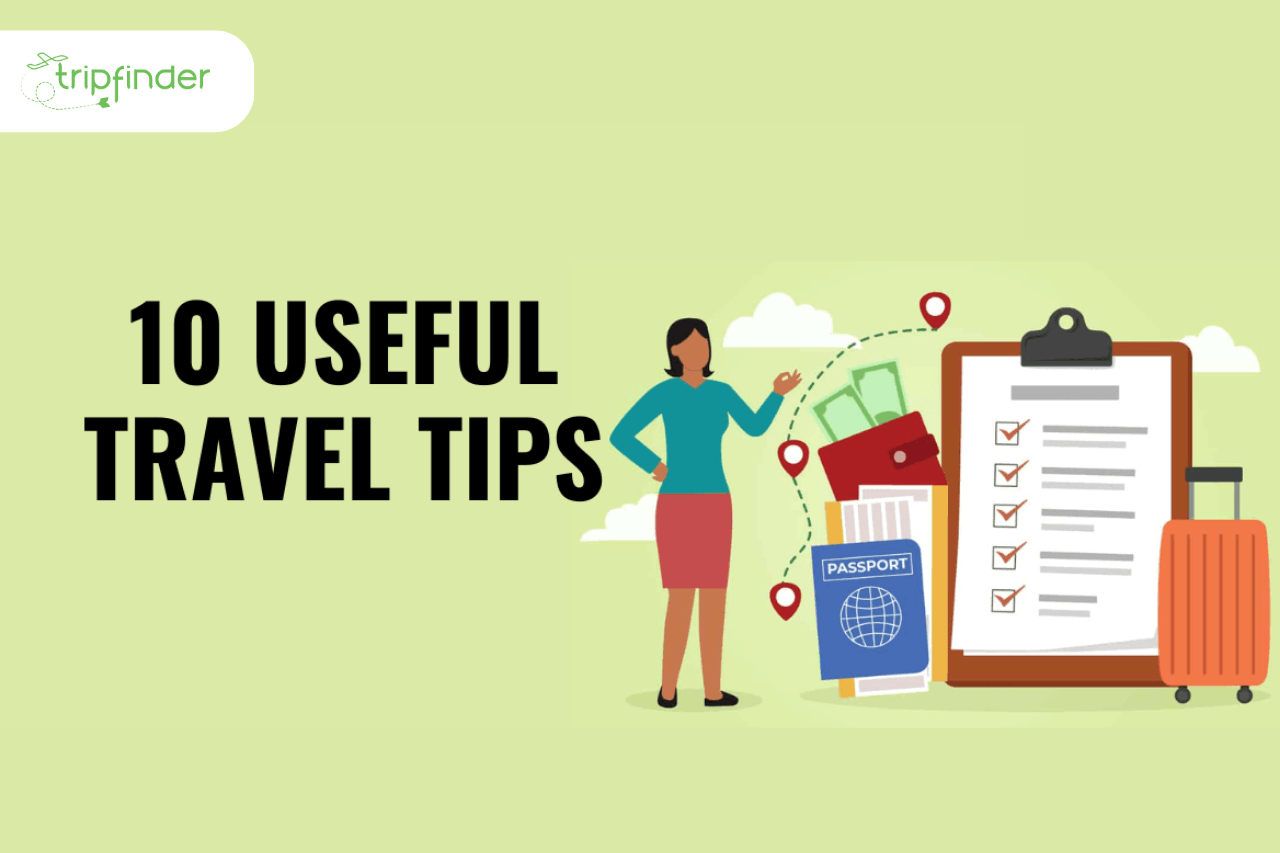How to travel wisely: 10 helpful tips

Travelling brings about excitement, but at the same time, we feel anxious if we packed everything and keep checking again and again.
The most critical step is packing. If you remember a necessary item, you’ll be satisfied and be able to search for the closest store to your destination. If you overpack, you risk becoming disorganized, carrying too many bags, and losing money on expensive airline baggage fees. So we decided to go over the most fundamental and helpful packing guidelines again.
Here are ten essential packing tips that every traveller ought to know.
- Use packing aids
Eagle Creek compression Sacs are my all-time preferred packing item. Utilize them to shrink your clothing into a compact, vacuum-packed bundle that only occupies a small amount of suitcase space. Packing envelopes and packing cubes are additional tools to help you organize and fit more in your bag.
- Check if you have the essential items
You must keep your valuables and necessary items in your carry-on bag rather than your checked luggage. Always bring your passport, identification, cash, credit cards, jewellery, electronics, and other valuables when flying. You don’t need us to explain why you should always have your wallet and passport with you. But you’ll regret packing your pricey watch in a checked bag if the airline misplaces it or if a TSA agent has sticky fingers.
- Layering
This guidance has two parts: Wear layers and bring layers with you. First, having a lot of layers in your travel wardrobe can allow you to transition across various climates in comfort and style. Second, your bag’s contents should be organized into neat layers for quick screening. The TSA advises packing your belongings “in layers (shoes on one layer, clothes on another, electronics on one layer, etc.)” so that the security officer inspecting your suitcase can see what’s inside clearly. You’ll get through the security queue more quickly the quicker the TSA employee can screen your belongings.
- Pack dual-purpose garments
If it has two uses, there is one less item to pack. Dual-purpose products are worth their weight in airline baggage costs, such as slacks that can be worn as shorts or a jacket that can be used as a travel pillow.
- Washing your clothes on the road
One of my favourite things about renting a vacation home is the laundry facilities. You’re set if you know your hotels offer complimentary laundry services. Even very long excursions can be completed with a small number of clean, wearable articles of clothing if you’re staying in a hotel; phone ahead to inquire about the availability and pricing of laundry services. Travellers can wash their clothing in sinks and hang them to dry if they stay in accommodations without laundry facilities or are on cruises (cruise lines are known for charging an arm and a leg for laundry services). To fit everything in a suitcase, always bring a travel-size packet of detergent and a sink stopper for washing clothes when travelling. Portable laundry-drying lines attached to showers via suction cups are also a good choice; you can find them at many travel-supply stores.
- Use your item wisely
Tourists are typically allowed to bring one carry-on bag and one personal item onto the aircraft. Although there are specific size restrictions for this unique item (which vary by airline), a handbag, laptop bag, or backpack is typically acceptable. In her book, Five Tips for Fitting it All in a Carry-On Bag, Caroline Morse offers advice on maximizing your item allocation.
- Follow the 3-1-1 rule.
What happens if you don’t adhere to the 3-1-1 carry-on luggage guidelines established by the Transportation Security Administration (TSA)? If you try to bring a huge bottle of shampoo or a full-size gel deodorant past the security checkpoint, the TSA will probably take your items away, which will delay you in line. First, learn the organization’s policies: All liquids taken into aircraft must be in containers measuring 3.4 ounces or less and be contained in a single, transparent, quart-size zip-top bag. They know which things the TSA deems to be liquids or gels and, as a result, are governed by the 3-1-1 rule, which is also helpful. It’s more complicated than it seems. Gels include frosting, pudding, mashed potatoes, and peanut butter. As well as liquids or gels, aerosols, lip gloss, and mascara are also included. However, remember that liquid prescription drugs are an exception.
- Know your airline’s baggage-fee policy
Any packing strategy aimed at saving money must consider the airlines’ complicated and perplexing baggage fee policies. Most U.S. carriers impose exorbitant fees for checked luggage on domestic flights, even though most airlines allow passengers to limit at least one bag for free on foreign flights. Even for carry-on bags, the infamously hostile cheap airline Spirit Airlines charges up to $100. Visit your airline’s website and study the luggage policy before packing. If you’re confident you’ll be checking a bag or two, you should do this before purchasing your plane ticket. Some airlines offer at least one complimentary checked bag on domestic flights.
- Prepare a packing checklist
Packing is one area where procrastinators need to catch up. Start your packing process days or weeks before you are scheduled to go; this will give you enough time to make a thorough list and buy any additional items you may need. Creating a packing list is a foolproof way to guarantee that you never forget to bring something crucial.
- Roll, don’t fold
Many travel professionals think rolling is preferable to folding, especially backpackers who must cram months’ worth of clothing into a pack the size of a box of wine. Clothes are more compact when tightly rolled than when folded. Additionally, they are less likely to develop deep fold crease wrinkles.
Hope these tips were helpful for you with your packing. Stay safe and have a nice travel.
